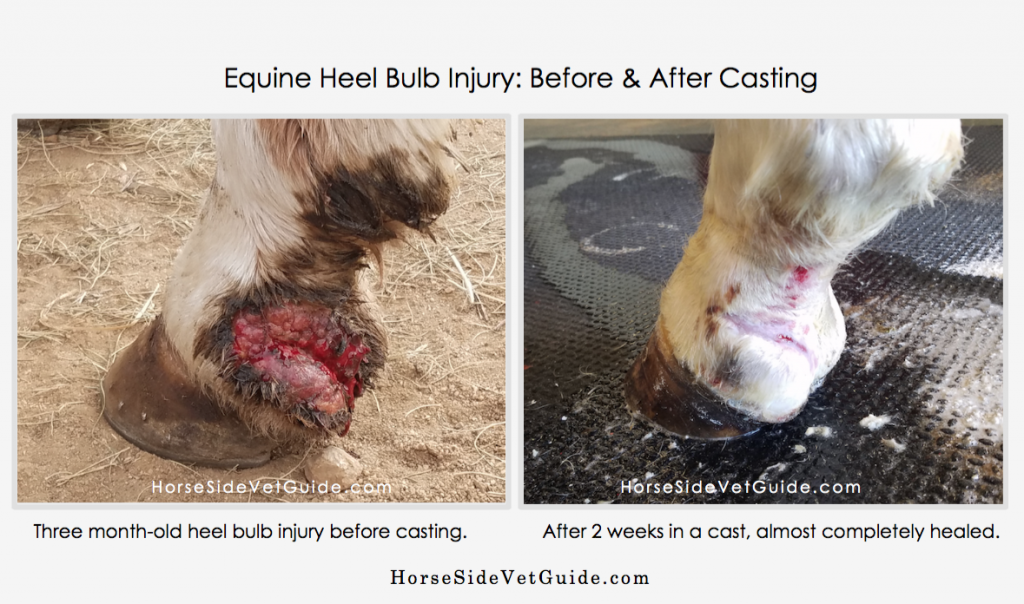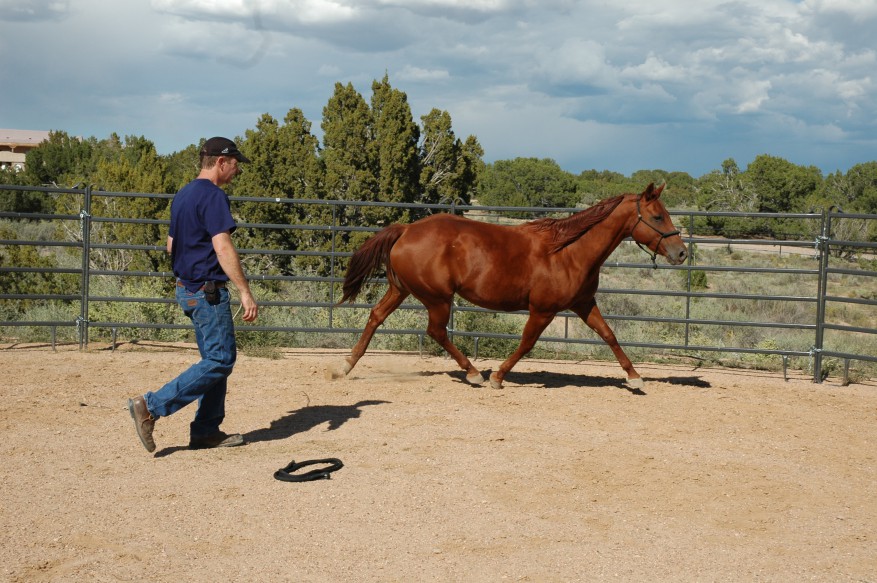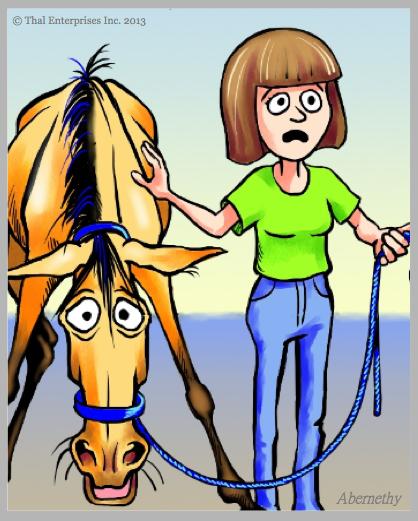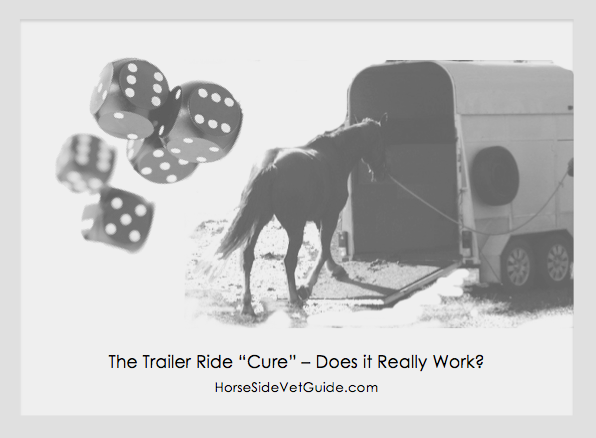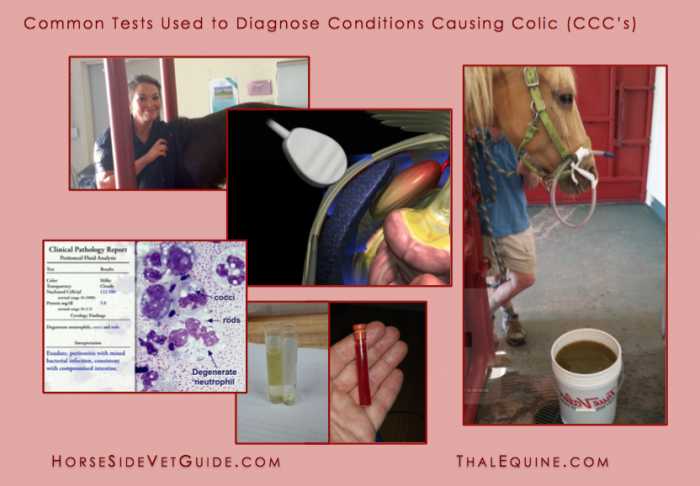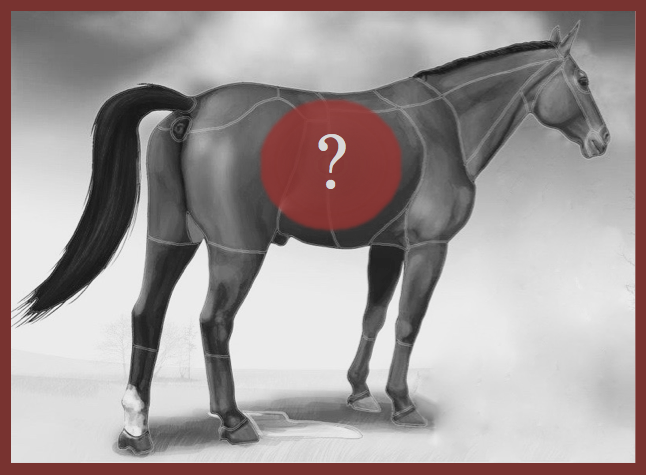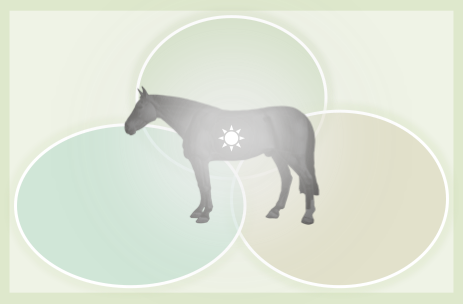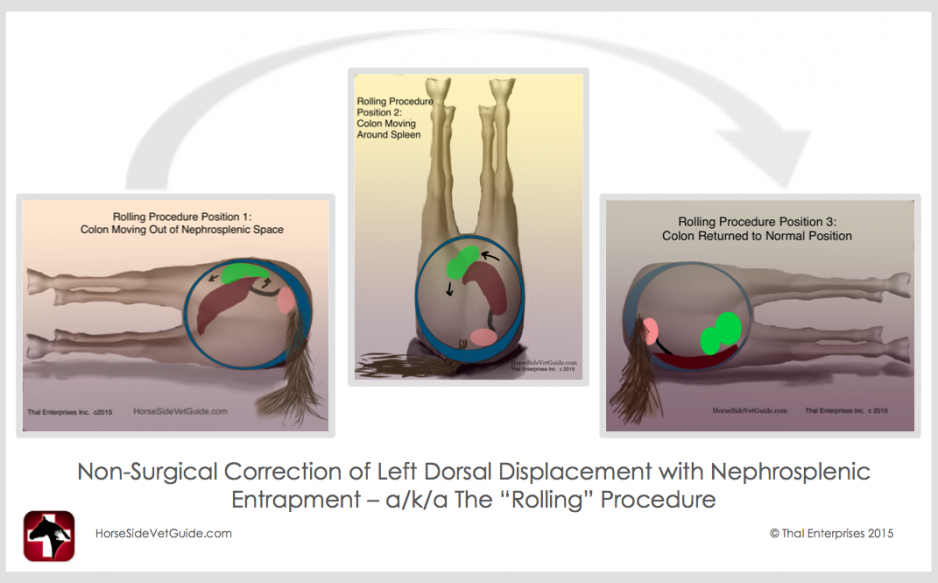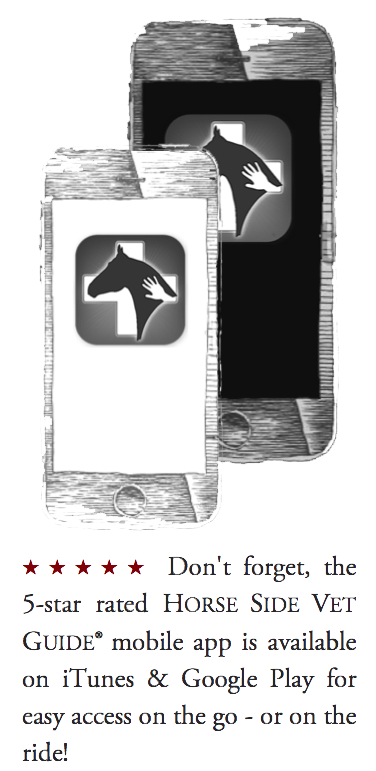Fancy, a 20 year old quarter horse sustained a severe heel bulb laceration. Her owners had tried a variety of topical wound ointments, but the wound actually became larger, and developed severe proud flesh. We first saw Fancy 3 months after injury. We removed excessive proud flesh and kept the limb bandaged for 30 days. The wound improved, but stopped healing at […]
